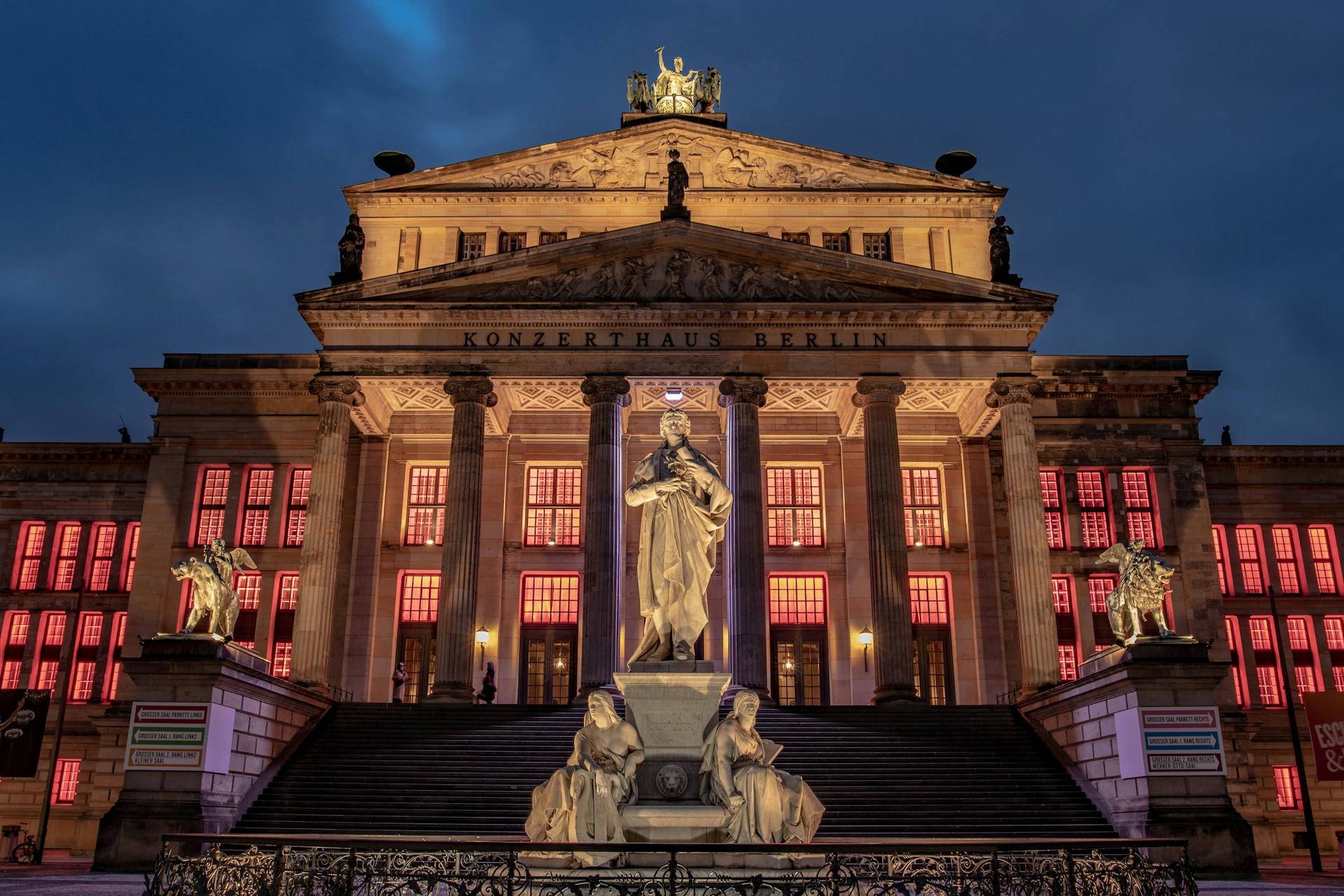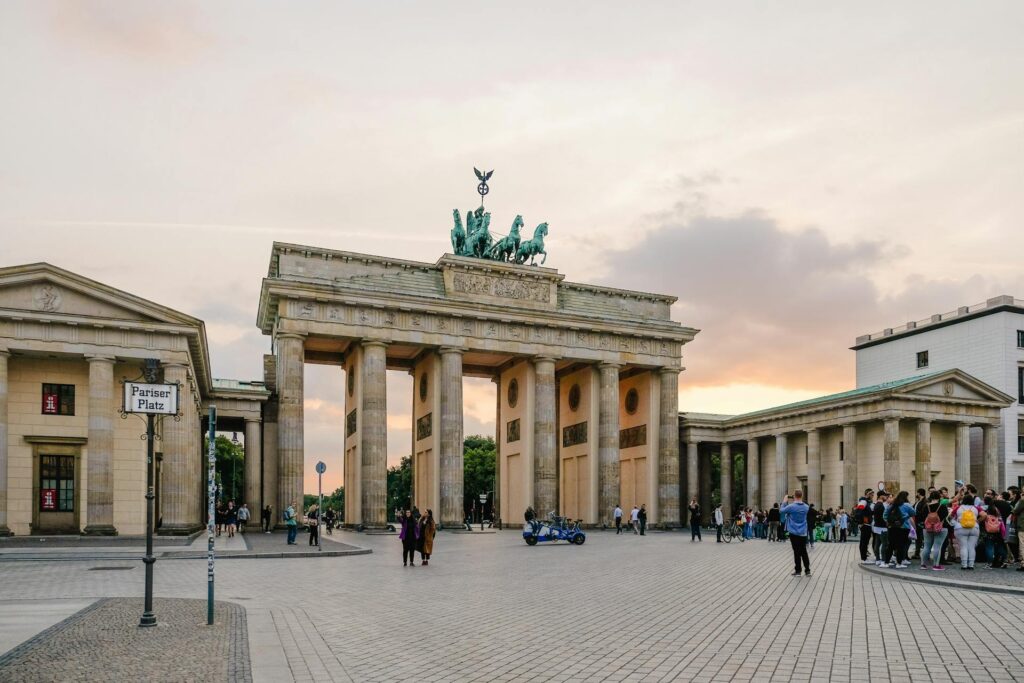Berlin is a city where history whispers through its streets, and its architecture tells tales of a turbulent past and an inventive present. This city is a living museum, showcasing a remarkable blend of styles that mirror its cultural metamorphosis. From the austere functionality of Bauhaus to the stark realism of Brutalism, Berlin architecture encapsulates a unique narrative of resilience and reinvention.
Bauhaus Beginnings
The Bauhaus movement, founded by Walter Gropius in 1919, was a revolutionary force in Berlin architecture. The movement emphasized simplicity, functionality, and the integration of art, craft, and technology. Bauhaus buildings in Berlin are characterized by their geometric forms and minimal ornamentation, reflecting a philosophy that architecture should serve a social purpose.
One of the most iconic examples of Bauhaus in Berlin is the Bauhaus Archive, a testament to the movement’s enduring legacy. This building is not only an architectural marvel but also a repository of modern design. As you explore its halls, you are reminded of the global influence Bauhaus has had on contemporary architecture, similar to the impact seen in Zurich architecture.
The Influence of Modernism
Berlin architecture in the mid-20th century was heavily influenced by modernist principles. The city became a canvas for architects who sought to break away from traditional forms and create structures that embraced new materials and technologies. This era was marked by a desire for progress and innovation.
The Kongresshalle, known as the “pregnant oyster,” is a striking example of Berlin’s modernist period. With its sweeping curves and bold design, this building embodies the optimism and forward-thinking spirit of the time. The modernist ethos of Berlin is echoed in the evolution of architectural styles from ancient to modern times.
The Rise of Brutalism
As Berlin moved into the 1960s and 1970s, Brutalism emerged as a dominant force in the city’s architectural landscape. Characterized by its raw concrete forms and monumental scale, Brutalism was both a response to modernism and a reflection of the socio-political climate of the time. This style was as much about making a statement as it was about functionality.
The Berlin Philharmonic, designed by Hans Scharoun, is a prime example of Brutalist architecture. Its rugged exterior and innovative interior design break away from conventional aesthetics, creating a space that is both functional and avant-garde. This bold approach to design can be seen in other iconic structures worldwide, such as the transformative Sheikh Zayed Mosque design.
Post-War Reconstruction
The devastation of World War II left Berlin in ruins, necessitating a massive reconstruction effort. This period saw a fusion of architectural styles as the city rebuilt itself from the ashes. The need for practical and affordable housing led to the development of new neighborhoods, often characterized by simple, utilitarian designs.
Despite the challenges, Berlin’s post-war architecture retained a sense of creativity and dynamism. The Hansaviertel district, built for the 1957 International Building Exhibition, showcases a variety of styles from different architects, illustrating a collaborative spirit similar to the diverse architecture of Paris.
The Berlin Wall and Its Legacy
The Berlin Wall, a symbol of division and repression, also played a significant role in the city’s architectural narrative. Its fall in 1989 marked a turning point, sparking a period of reunification and regeneration. The wall’s remnants have been transformed into an open-air gallery, blending art and architecture in a poignant tribute to freedom.
The transformation of the Berlin Wall site is a powerful reminder of architecture’s ability to heal and inspire. This concept is mirrored in the spiritual resonance found in Las Lajas Sanctuary, where architecture and faith converge.
Contemporary Innovations
Today, Berlin architecture is a vibrant tapestry of past and present. The city is a playground for contemporary architects who continue to push boundaries and experiment with new ideas. This spirit of innovation is evident in structures like the Sony Center and the striking glass dome of the Reichstag.
These modern additions to Berlin’s skyline reflect a city that is constantly evolving, much like the ever-changing landscape of St. Petersburg architecture. The blend of history and modernity creates a dynamic urban landscape that captivates both residents and visitors alike.

Sustainable Architecture
In recent years, sustainability has become a key focus in Berlin architecture. Architects are increasingly prioritizing eco-friendly designs that minimize environmental impact. This shift towards sustainable practices is evident in the city’s use of green roofs, solar panels, and energy-efficient materials.
The energy-efficient designs of Berlin echo the principles of other sustainable architectural marvels, such as those found in the problem with modern architecture, which advocate for a balance between progress and preservation.
The Influence of Technology
Technology continues to shape Berlin architecture, offering new possibilities for design and construction. Digital tools and advanced materials have enabled architects to create structures that are not only aesthetically pleasing but also highly functional and resilient.
The integration of technology in architecture is evident in Berlin’s cutting-edge developments, which align with the innovative approaches seen in Sagrada Familia architecture, where technology enhances traditional craftsmanship.
Cultural Landmarks
Berlin’s cultural landmarks are an integral part of its architectural identity. From the neoclassical grandeur of the Brandenburg Gate to the contemporary elegance of the Jewish Museum, these structures serve as touchstones of the city’s rich history and diverse culture.
These landmarks are more than just architectural feats; they are symbols of Berlin’s enduring spirit and cultural renaissance. This cultural significance is comparable to the timeless beauty found in St. Peter’s Basilica architecture.
The Role of Public Spaces
Public spaces play a crucial role in Berlin architecture, fostering community interaction and enhancing urban life. Parks, squares, and pedestrian zones create a sense of openness and accessibility, inviting people to gather and engage with their surroundings.
Berlin’s emphasis on public spaces reflects a commitment to creating a livable and inclusive city, a sentiment shared by other urban centers that prioritize community-centric design, such as in church building interior designs.
Architectural Education and Innovation
Berlin is home to some of the world’s leading architectural schools, nurturing the next generation of architects and designers. These institutions provide a platform for students to explore new ideas and challenge conventions, fostering a culture of innovation and experimentation.
The educational landscape in Berlin supports a vibrant exchange of ideas, similar to the collaborative environment found in the architectural education systems of cities with rich histories, such as Christian architecture.
The Future of Berlin Architecture
As Berlin continues to grow and evolve, its architecture is poised to reflect the city’s dynamic future. The challenges of urbanization, climate change, and social equity will shape the next chapter of Berlin architecture, driving architects to create solutions that are both innovative and sustainable.
The future of Berlin architecture will likely draw inspiration from global trends, much like the architectural wonders that define the top 15 architectural wonders of the 21st century, blending creativity with functionality.
Conclusion
Berlin architecture is a testament to the city’s capacity for transformation and adaptation. From the visionary principles of Bauhaus to the bold statements of Brutalism, each style tells a story of its time and place. Today’s architects continue to build on this rich legacy, crafting a cityscape that is as diverse and dynamic as Berlin itself. As we look to the future, Berlin remains a beacon of innovation, where history and modernity coexist in perfect harmony.

Recent Posts
15 Floor Plan Graphic Styles That Will Elevate Your Presentation Game
The Role of Shadows in Architectural Storytelling
When Furniture Becomes Architecture: Blurring the Line